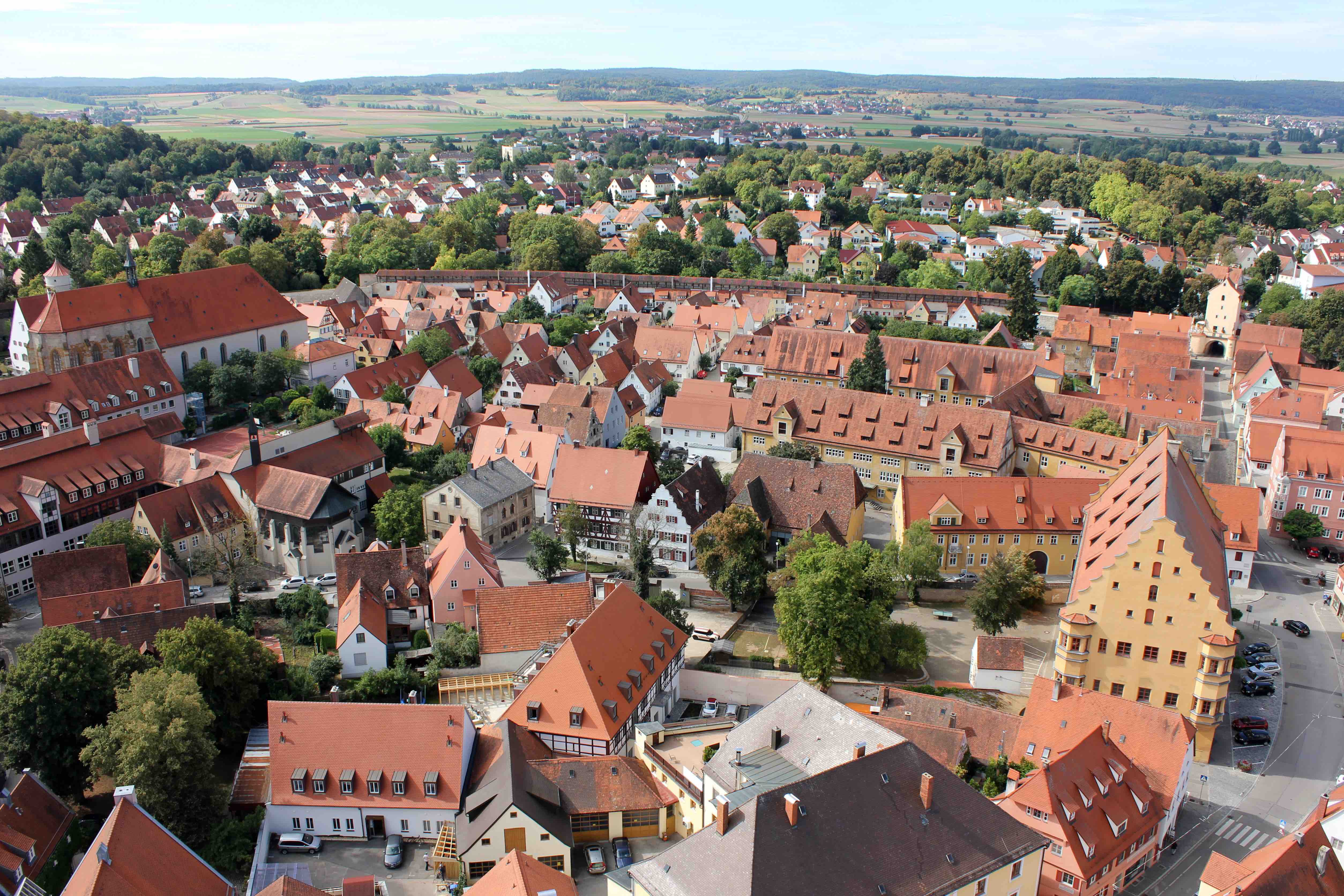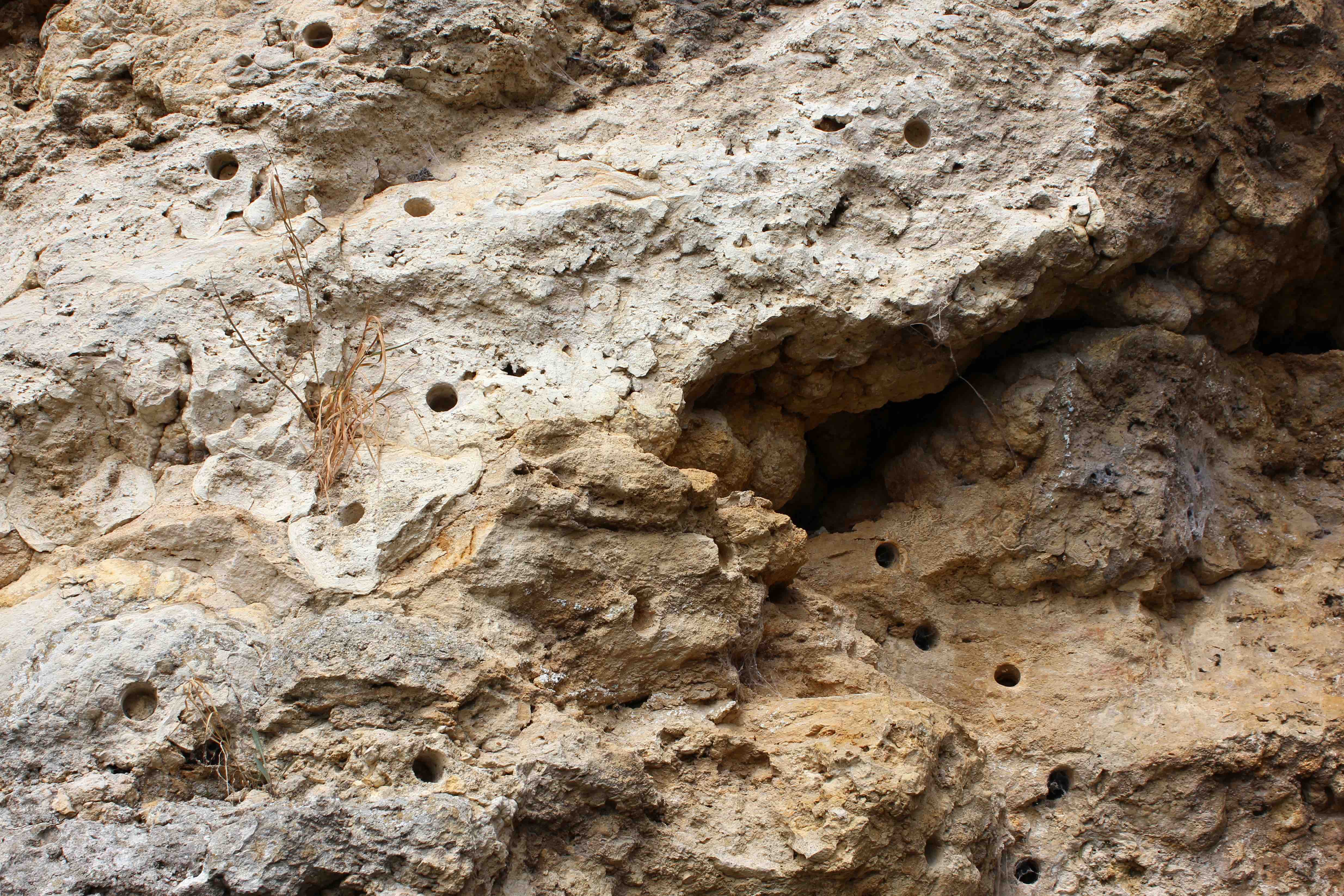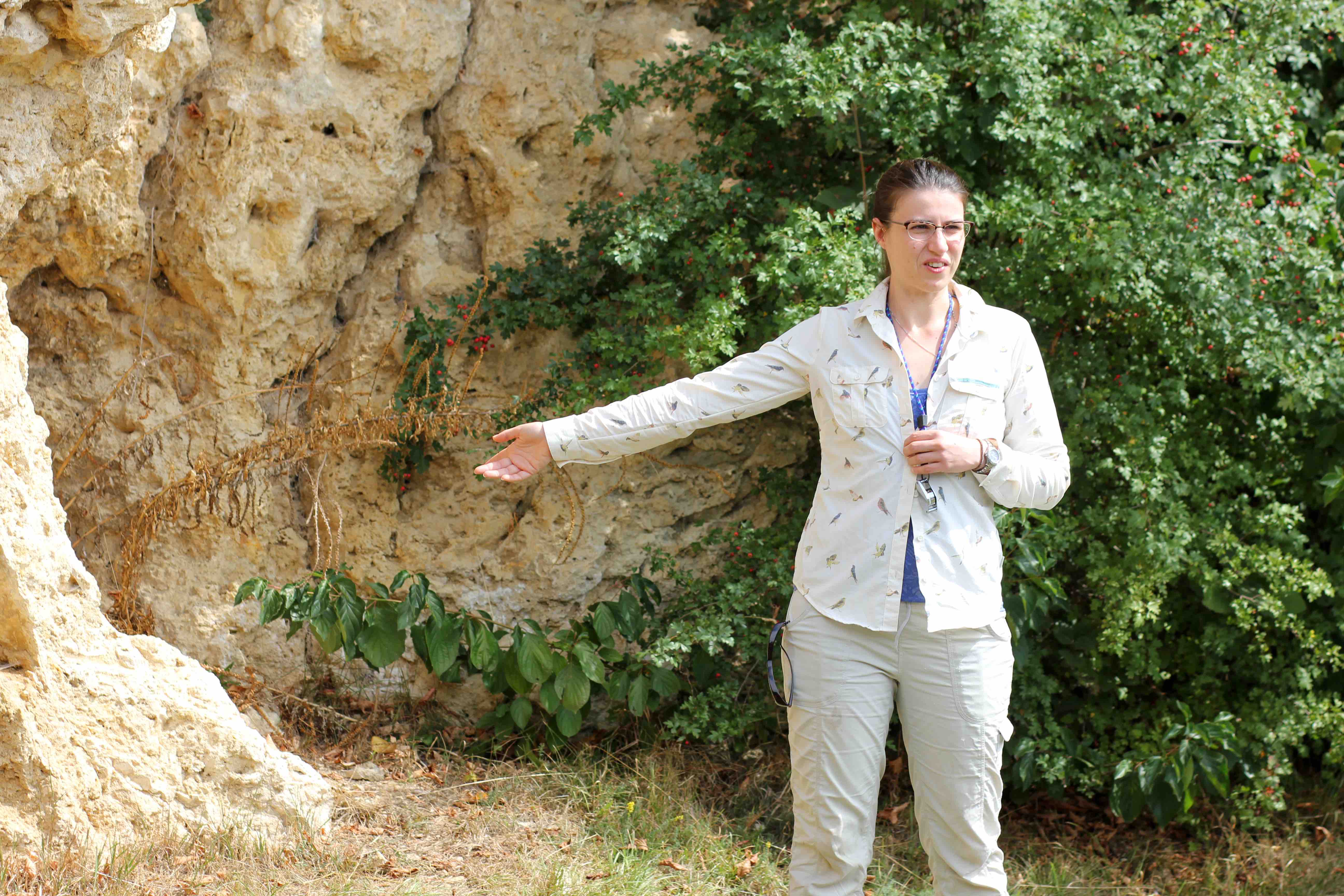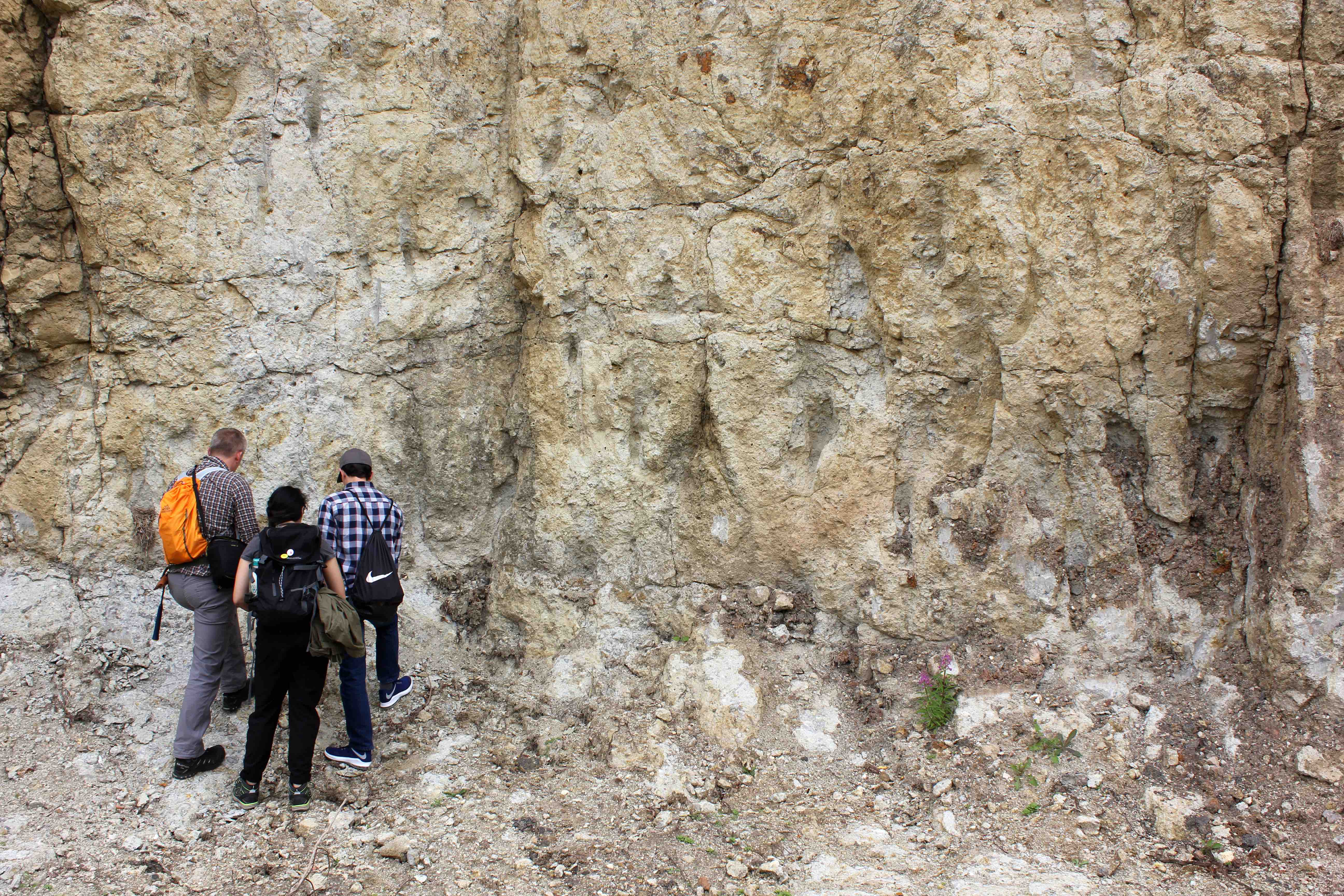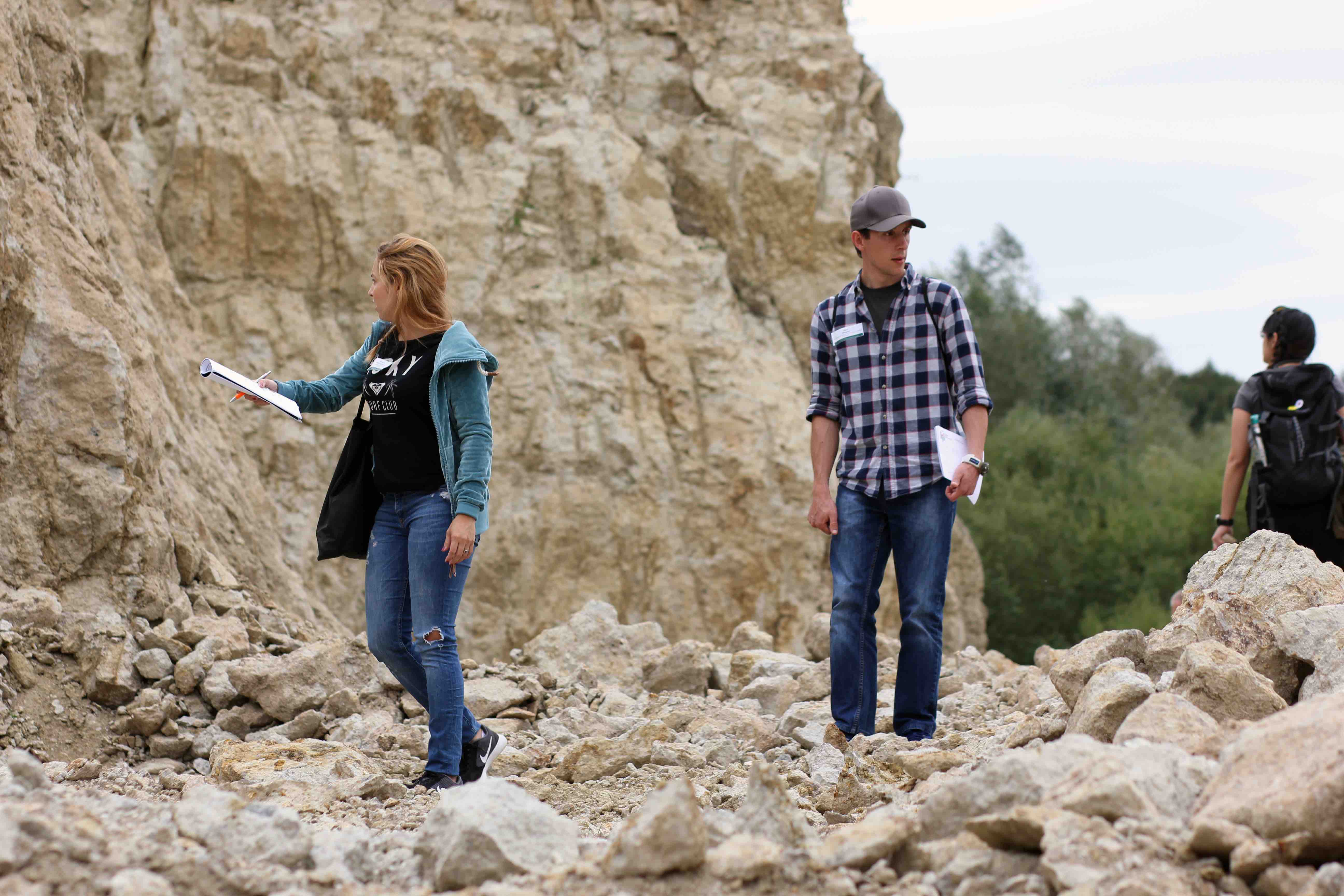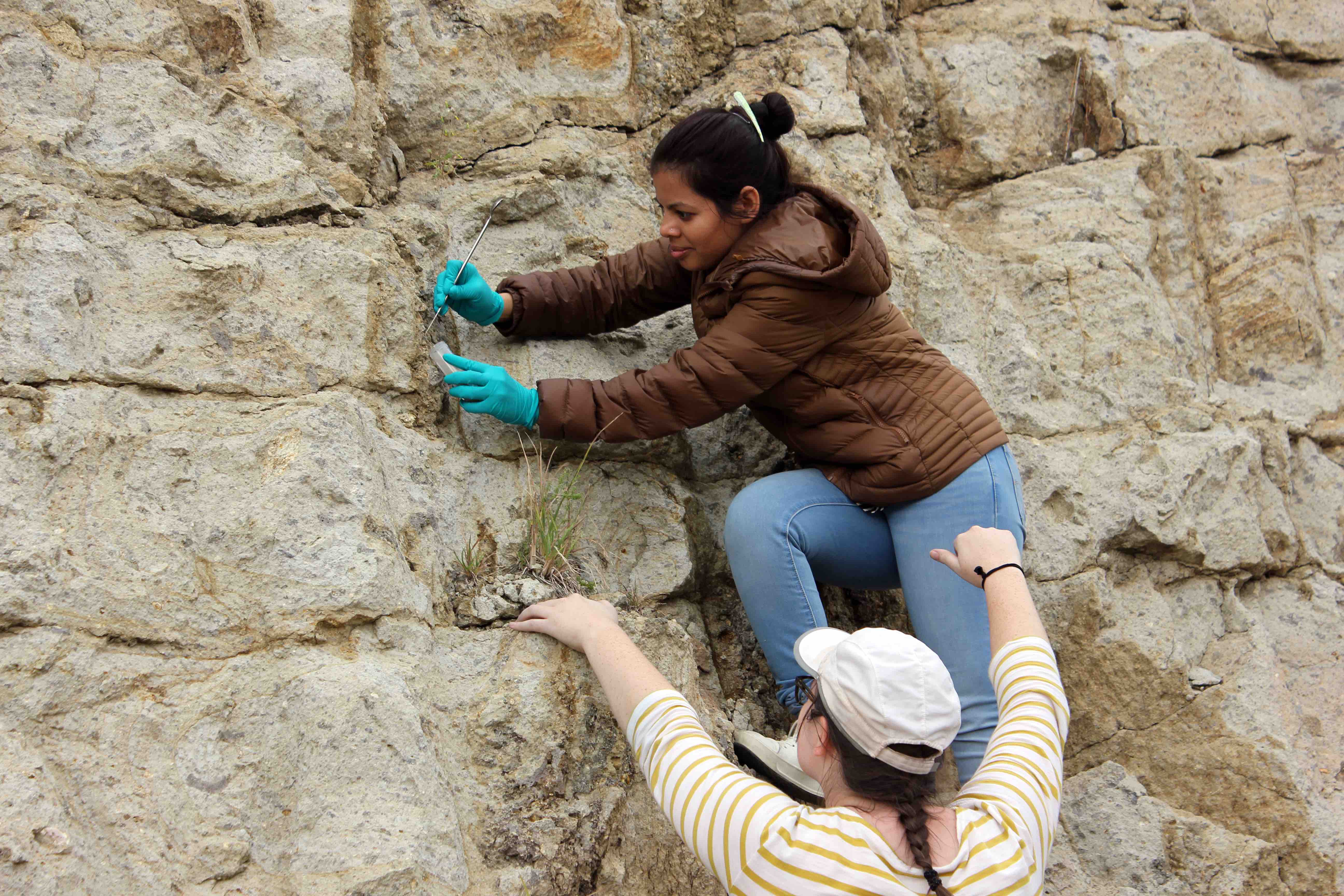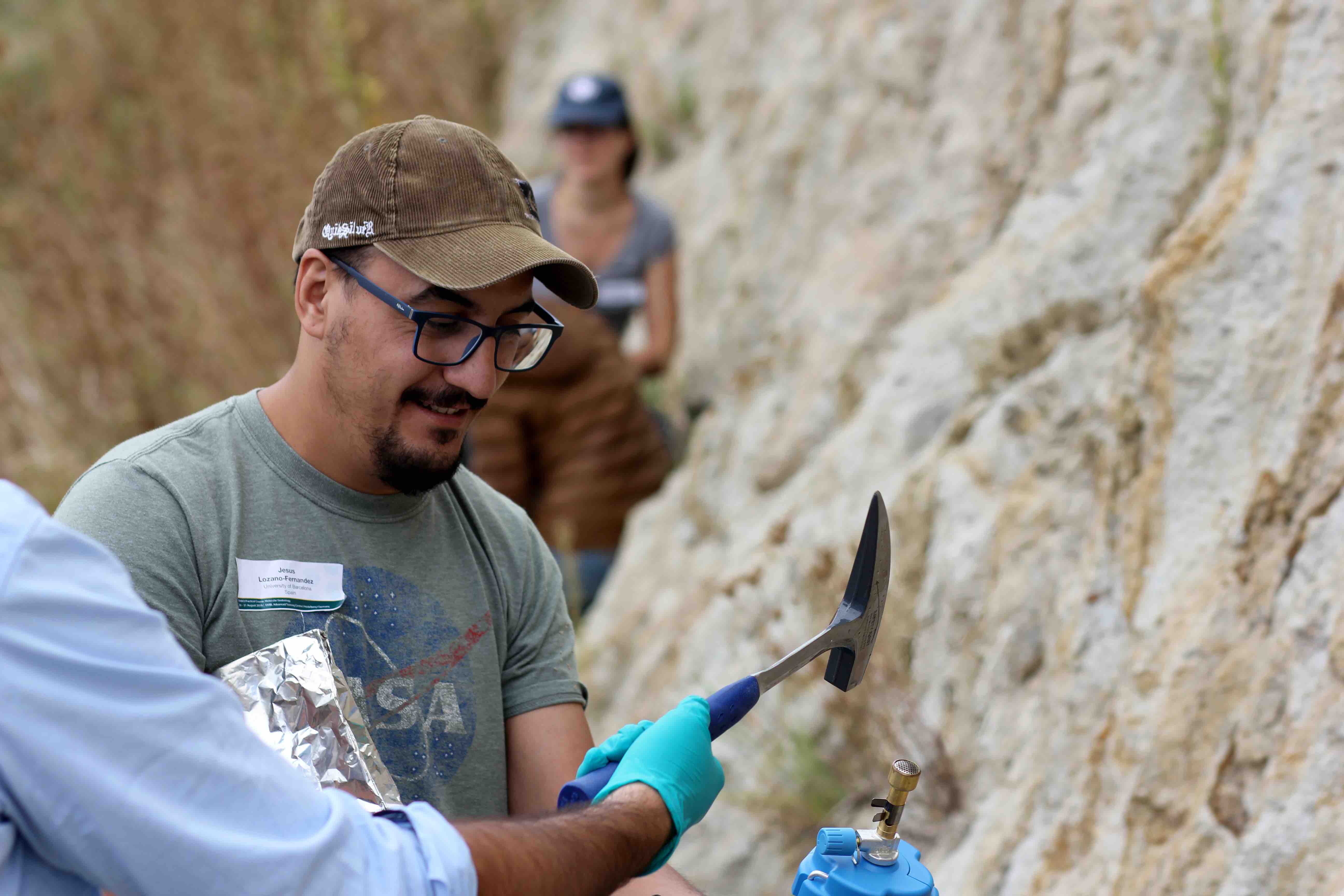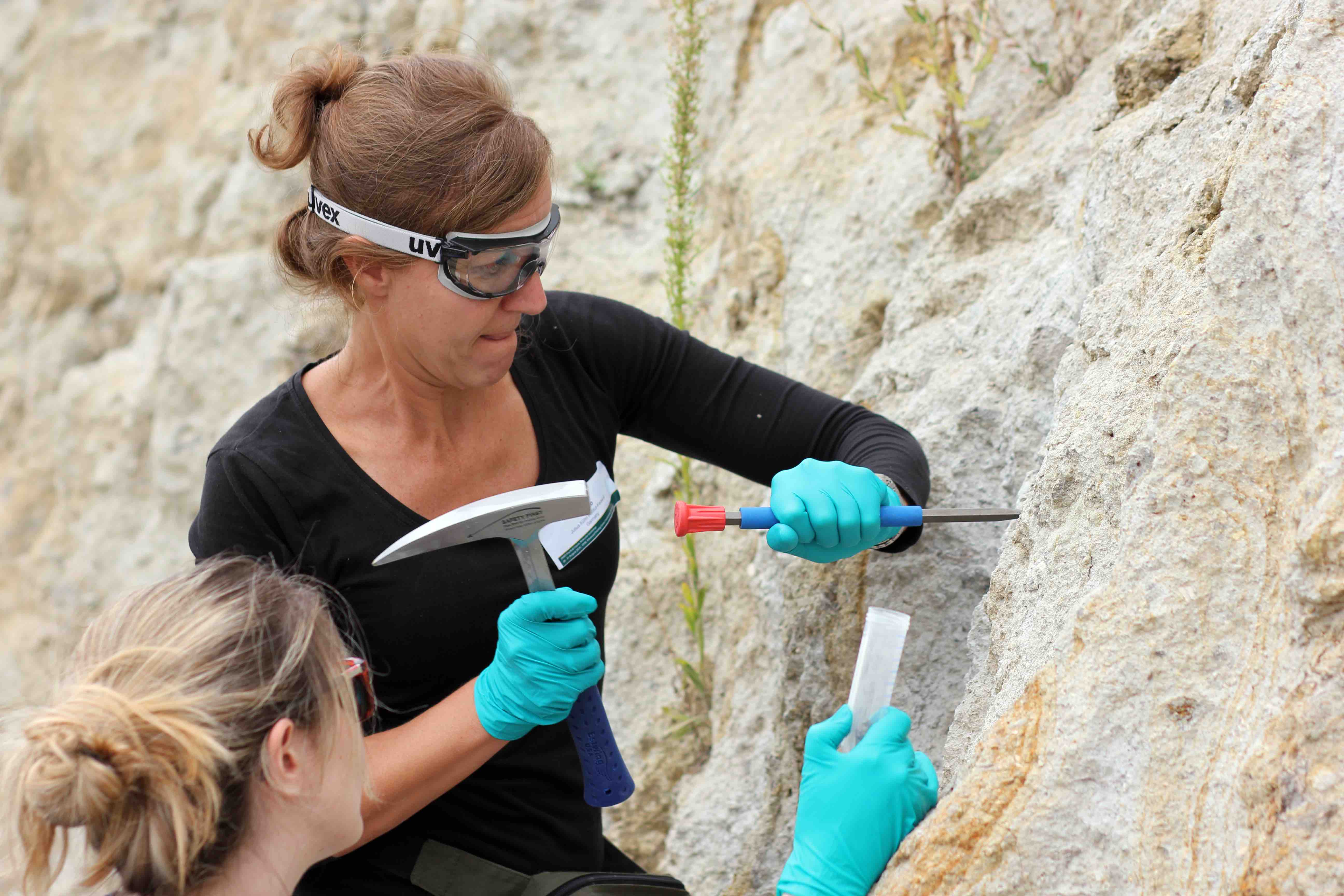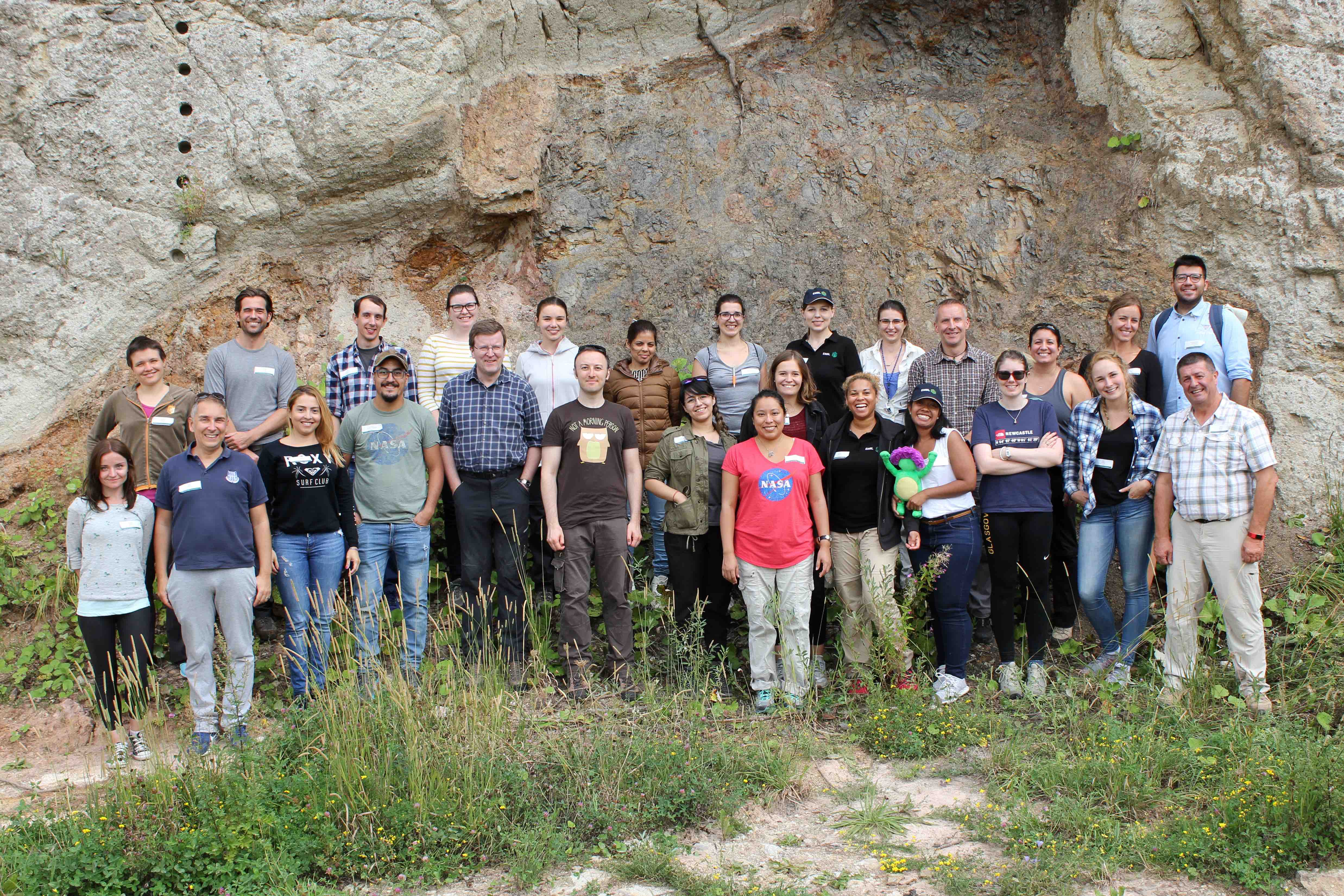
Looking for life using geobiology
Meet the organisers of EMBO’s first course on molecular geobiology
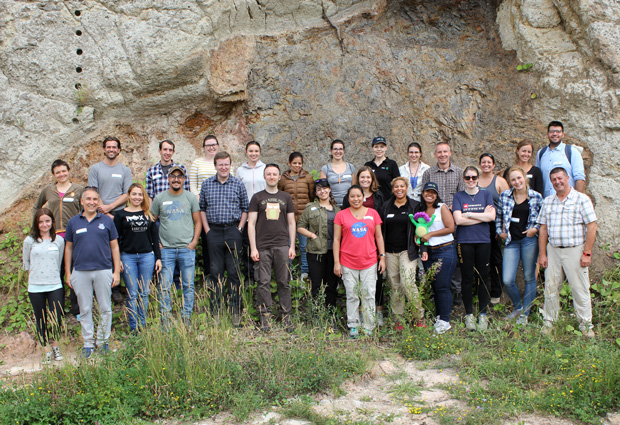
A diverse band of researchers, with interests in areas such as astrobiology, the origins of life, and the way organisms adapt to extreme environments, came together at EMBL’s Advanced Training Centre from 26–31 August. They were here for the EMBO Practical Course ‘Molecular Geobiology’. This was the first EMBO course on geobiology and the first to involve an element of fieldwork, with participants travelling to the Ries impact structure in Bavaria to take rock samples (scroll down for photo gallery) and test them for the presence of microbial species. The Ries impact structure is a crater 24 km in diameter, thought to have been formed by a meteorite impact around 14.5 million years ago.
Here, the scientific organisers and speaker Antonio Lazcano discuss the course and their research interests.
Haley Sapers
Caltech, USA

Part of my research involves working at the Sanford Underground Research Facility, based in a former gold mine in South Dakota. Around 5,000 feet below the surface there’s a series of exploration boreholes that give access to ancient aquifers, thought to have been separated from the surface for about 10,000 years. I study samples from these boreholes using a technique known as deep-ultraviolet (DUV) Raman spectroscopy, which is sensitive to a class of organic molecules called aromatic organics. Because this is a non-destructive technique I can then do further tests, such as gene sequencing or microscopy. By using these tools we can start answering many questions. What microbes are in the subsurface? Where are they? Are they active and what are they doing?
I’m working with the NASA JPL team developing SHERLOC, which is a DUV Raman spectrometer that’ll be included on the next Mars rover, Mars 2020, with the aim of looking for signs of life. You can think of life as a set of reactions that accumulate and enrich a specific set of organic molecules that you wouldn’t expect to see by chance. So when we see a cluster of organic molecules that’s statistically improbable, one of the interpretations is that it was formed by biological processes. We can therefore use SHERLOC to look for these biosignatures and select samples that will eventually be returned to Earth as part of a sample-return mission.
I’m pretty sceptical about finding current life on Mars. Earth and Mars were very similar to each other early in their history, so there’s no reason to think that life wouldn’t have started on Mars the same way it started on Earth, but then their climatic histories diverged and the surface of Mars quickly became inhospitable. If there was life on Mars it likely went down into the subsurface to escape the desiccating environment and harsh radiation, so I think our best bet for looking for signs of life is actually the Martian subsurface. If there are briny aquifers in Mars’s subsurface, there’s no reason it couldn’t be habitable today – but just because it’s habitable, that doesn’t mean it’s inhabited.
José Eduardo González-Pastor
Centro de Astrobiología, Madrid, Spain

I have two topics in the lab. One is multicellularity, but in bacteria. Under laboratory conditions we tend to see bacteria as unicellular, but in nature most bacteria live and form multicellular communities, or biofilms, so I study how they organise and some of the social behaviours they develop. They have many mechanisms to sense the community around them and activate particular behaviours.
My other line of research is about understanding the molecular mechanisms that allow microbes to adapt to extreme conditions. For instance, we’ve been studying microbes living in Río Tinto – a river in Spain that’s highly acidic, with characteristics thought to be similar to environments on Mars. We’re also analysing bacteria living in Antarctica to study adaptations to cold conditions, and we’re focusing on extremely salty – or hypersaline – environments, because these could exist on Mars or on some of the moons of Saturn or Jupiter. Some of these hypersaline environments are exposed to high levels of UV radiation, so it’s interesting to see how bacteria can tolerate high levels of radiation too.
Another place we have samples from is the Atacama Desert. Obviously it’s extremely dry there, but still there are some rocks that are able to retain water because they’re highly hygroscopic. Some of them are also translucent, so microbes such as cyanobacteria or algae can get energy from the sun while growing inside the rock. All this information is really useful to say that life on Earth is possible at least up to this limit of acidity, up to this limit of radiation, and so on. And that helps us to say whether life could be possible on other planetary bodies.
Kiran Patil
EMBL

The fieldwork aspect of this course came out of discussions between Haley and me. We’d been talking about collecting samples from the Ries crater to see if we could identify the microbes there and analyse their DNA, which had not been done before. So, last year, Haley came to EMBL and, along with Sonja Blasche and Yongkyu Kim in my group, and Vladimir Benes from EMBL’s Genomics Core Facility, we drove there to collect some rocks that were formed by the meteorite impact. After some efforts from Sonja and Vladimir we managed to get good quality DNA sequences from these rocks and eventually isolated some of the microbes that are likely to be new species – this is an ongoing project. We thought it was an extremely rewarding and fun exercise and one that other people might benefit from. The subsequent discussions led to the idea of the course, which we thought would be incomplete without actually going to the field. Only then can one understand the whole picture.
My research focuses on metabolic networks – the interactions of the various chemicals involved in metabolism, not only within a cell but also between cells and even between different species living in a community. For me it would be fascinating to find evidence of microbial communication early in the evolution of life, with different microbial life forms not only existing but strongly depending on each other. This might have shaped their evolution not as a single organism but as a whole community. That would be a truly remarkable finding!
Antonio Lazcano
National Autonomous University of Mexico

During my career I’ve been involved in a number of experiments which tried to simulate the conditions of the primitive Earth. It turns out to be quite easy to synthesise a number of chemical components of life, such as monomers of nucleic acids and proteins, from this primordial soup. I’ve also been part of some groups analysing the composition of meteorites. We don’t have a piece of the primitive Earth, so we rely on meteorites that have the same age as the Solar System, and we use those as the best natural model we have of the kinds of chemical processes that were taking place when the Earth formed. I also do work to understand the origins of the basic metabolic pathways.
I always joke that I owe my interest in science to the Soviet space programme. I was born in Mexico but as a kid I lived in the United States. When the Soviets put Sputnik 1 into orbit, it was a tremendous blow not only politically but also socially. One of the reactions of the US was to put a truly exceptional effort into promoting science education. I also remember taking holidays in Mexico City with my grandmother, where I would read a lot. She took me to the opera where we saw The Tales of Hoffmann. There’s a character who’s a sort of wizard, alchemist, and scientist – basically a highly eccentric character – called Spalanzani. Afterwards I learned that Hoffmann based his character on Lazzaro Spallanzani, the Italian scientist who investigated the idea of the spontaneous generation of life from decomposing organisms. For me it was very natural not only to think about science, about evolution, about the origins of life, but also about their connection with art, music, and so on. I was very lucky to be born in a family that was convinced and still is convinced that you have to have a wide perspective on life.
